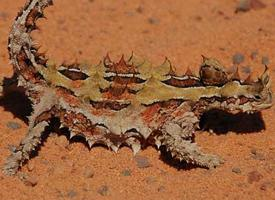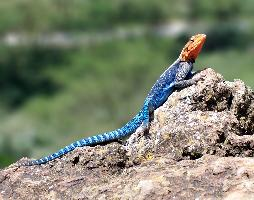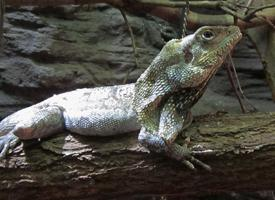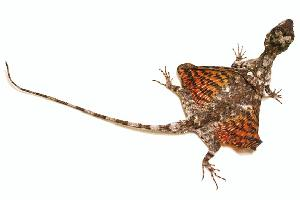
Váhy a míry
| Délka | od 15 do 20 cm |
|---|---|
| Hmotnost | od 33 do 88 g |
Stav ohrožení
| Ohrožen |
Popis zvířete
The Thorny devil, scientifically known as Moloch horridus, is a remarkable and unique reptile native to Australia, particularly found in the arid, sandy deserts of the central and western regions of the continent. This creature is a master of camouflage and survival in one of the harshest environments on Earth.Measuring up to 20 centimeters (about 8 inches) in length, the Thorny devil is instantly recognizable by its distinct appearance. Its body is covered in an armor of spiny scales, which serve multiple purposes: protection from predators, camouflage among the desert vegetation and sands, and a method of collecting water. The coloration of these reptiles is predominantly shades of desert browns, tans, and ochres, with the ability to change hue to match their surroundings, a feature that aids in their remarkable camouflage abilities.
One of the most fascinating aspects of the Thorny devil is its method of hydration. This lizard has developed a unique system of grooves and channels between its spines. These channels direct water, collected from morning dew or rain, towards the mouth of the animal. This ingenious adaptation allows the Thorny devil to thrive in its arid habitat, where standing water is rare.
The diet of the Thorny devil is almost exclusively ants. An adult can consume thousands of ants in a single day, using its sticky tongue to capture them. This specialized diet means the Thorny devil spends much of its time foraging near ant trails.
Despite its fearsome name and appearance, the Thorny devil is a slow-moving and gentle creature. Its primary defense mechanism against predators, such as birds and larger reptiles, is its camouflaged and spiky appearance. When threatened, it can also present a false head by lowering its real head between its forelegs, leaving the predator to attack a less vital part of its body.
Reproduction for the Thorny devil involves the female laying eggs, typically between 3 and 10, in a burrow dug into the sand. These eggs are incubated for several months before the young, miniature versions of the adults, emerge. These juveniles are independent from birth, starting their life journey in the vast Australian desert.
The Thorny devil's unique adaptations and lifestyle make it a fascinating subject of study for scientists and a creature of wonder for nature enthusiasts. Its existence is a testament to the incredible diversity of life on Earth and the extraordinary ways in which species evolve to survive in their specific environments. Despite the harshness of its habitat, the Thorny devil has carved out a niche for itself, showcasing the resilience and ingenuity of nature.
Podobná zvířata
Nové fotografie zvířat
Top 10 zvířat
- Chinese water dragon (Physignathus cocincinus)
- Galápagos tortoise (Geochelone nigra complex)
- Dolphin gull (Leucophaeus scoresbii)
- Japanese macaque (Macaca fuscata)
- Colombian red howler (Alouatta seniculus)
- Sea urchins (Echinoidea)
- Moustached guenon (Cercopithecus cephus)
- Diana monkey (Cercopithecus diana)
- Common reed warbler (Acrocephalus scirpaceus)
- Common house mosquito (Culex pipiens)


